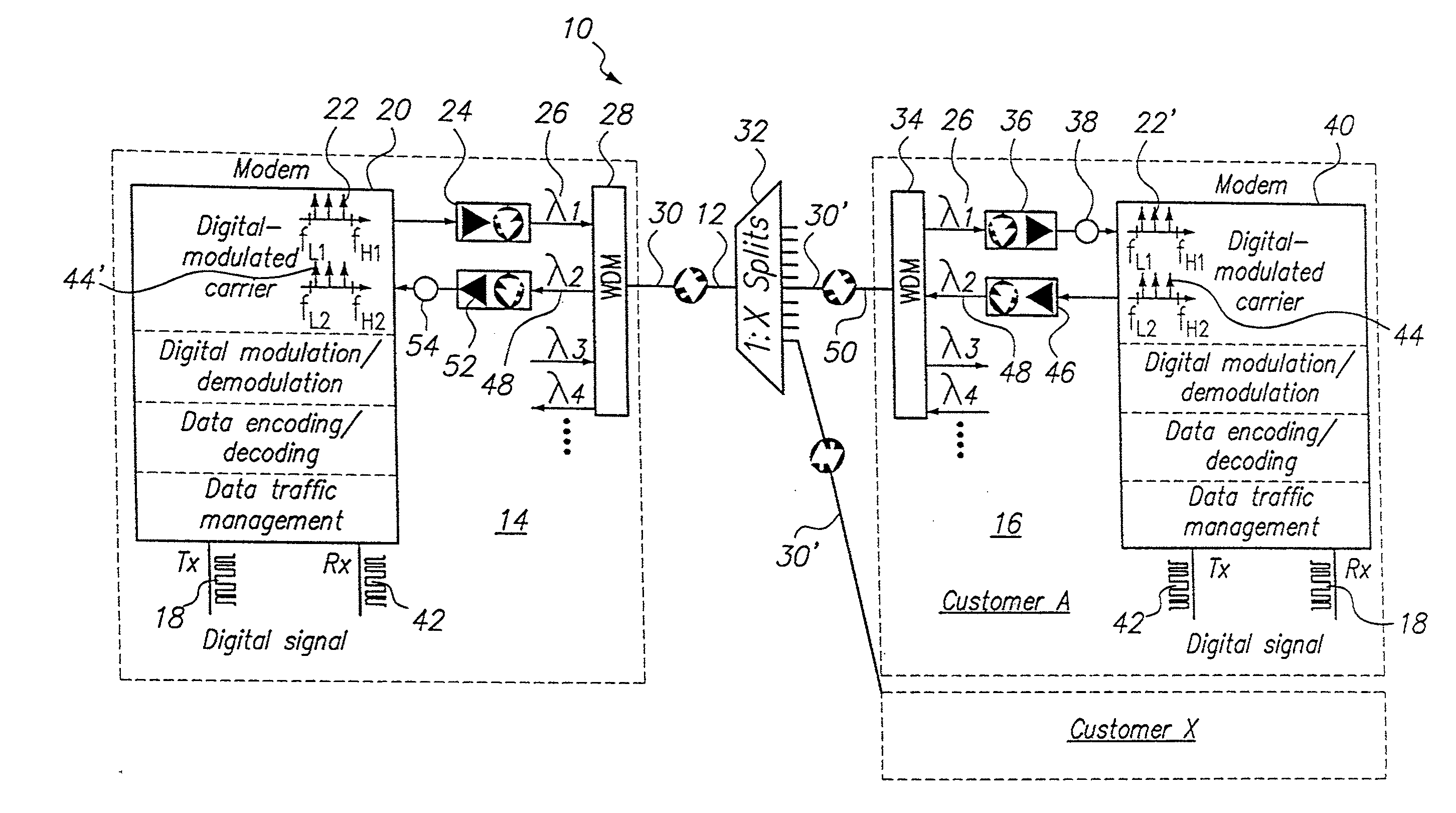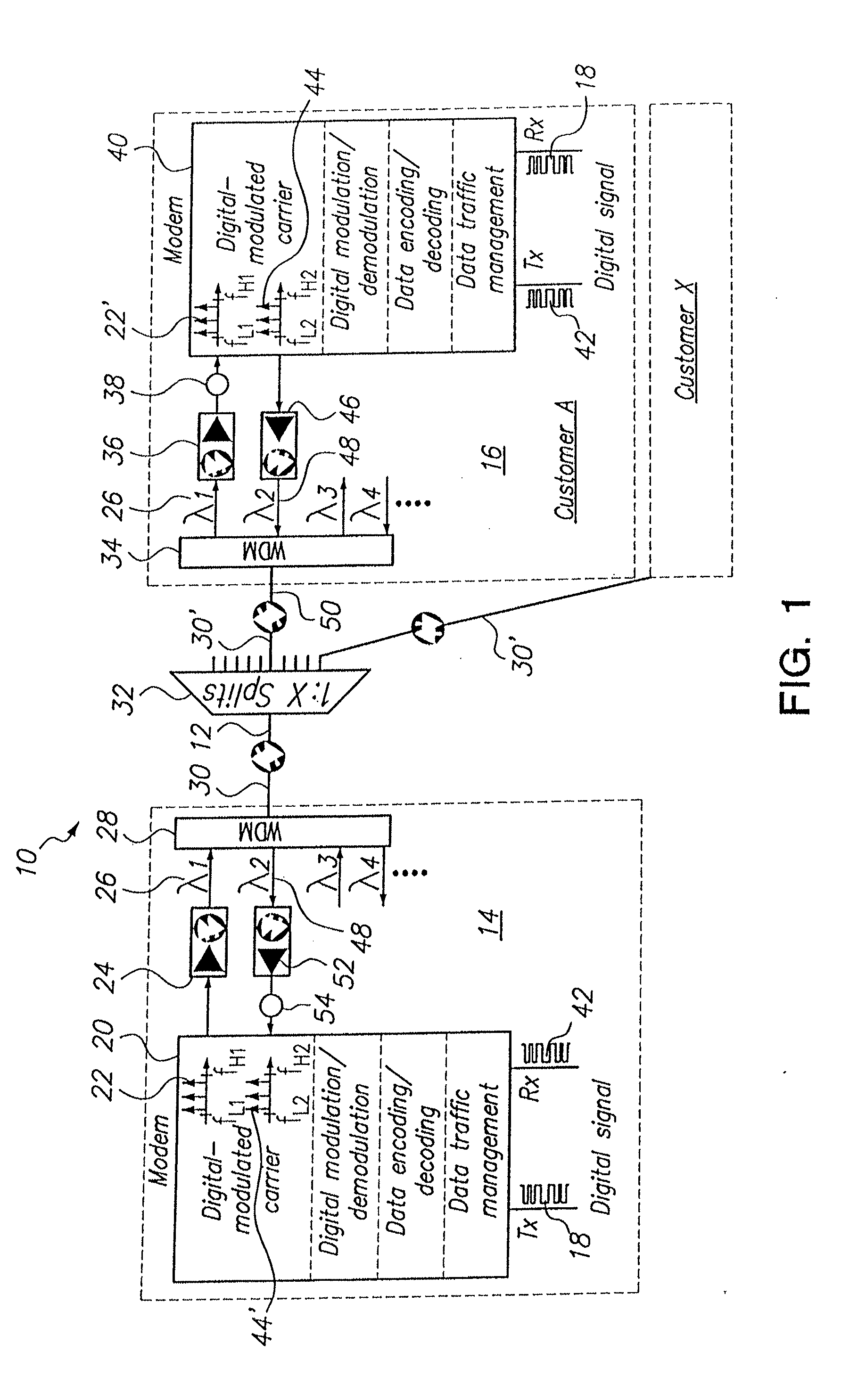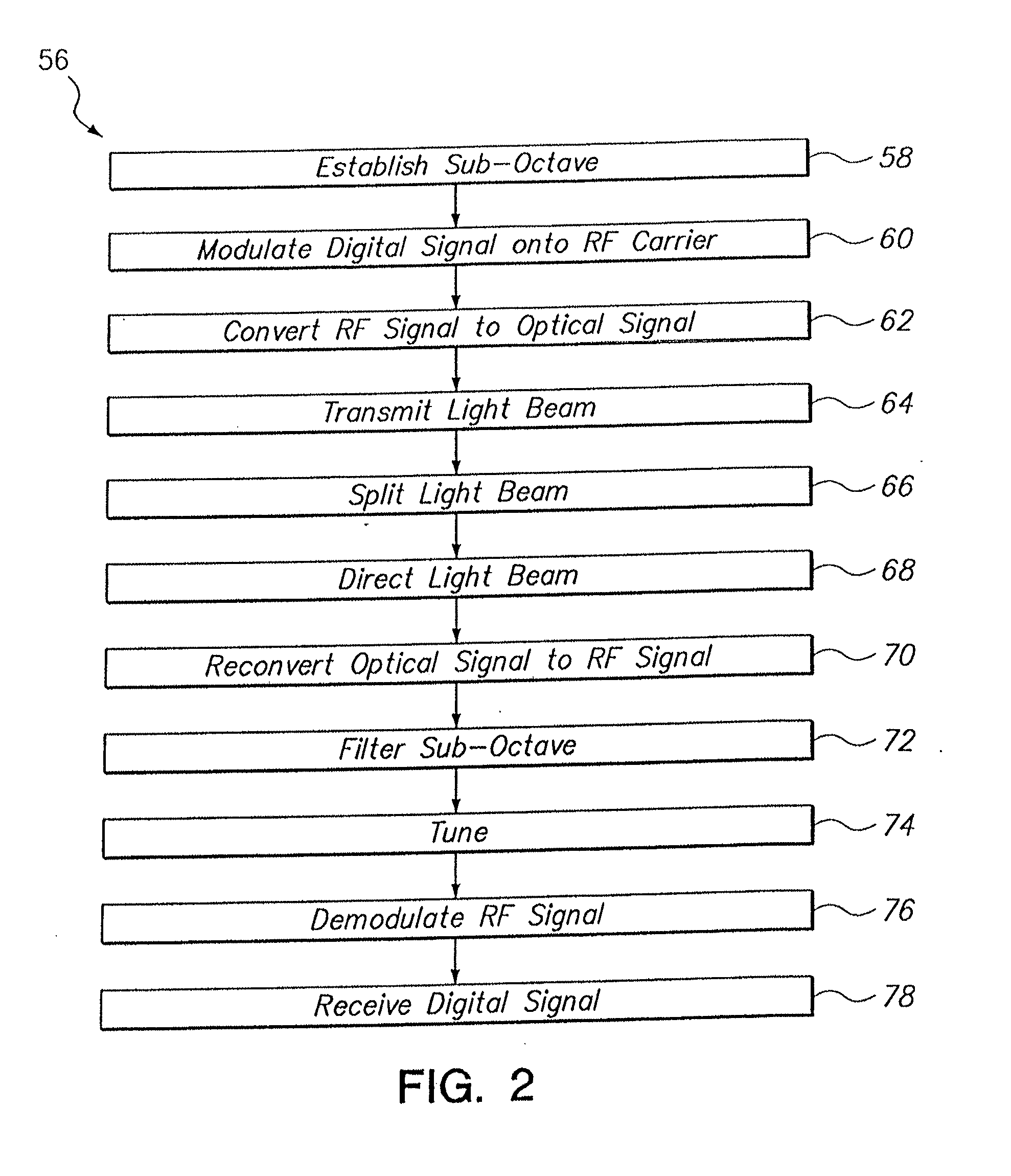System and method for multiple sub-octave band transmissions
a transmission system and sub-octave technology, applied in the direction of fibre transmission, distortion/dispersion elimination, electrical equipment, etc., can solve problems such as reducing clarity
- Summary
- Abstract
- Description
- Claims
- Application Information
AI Technical Summary
Benefits of technology
Problems solved by technology
Method used
Image
Examples
Embodiment Construction
[0024]Referring initially to FIG. 1, component elements of a Passive Optical Network (PON) in accordance with the present invention are shown collectively and generally designated 10. As shown, the PON 10 includes a fiber optic cable (optical fiber) 12 that interconnects an Optical Line Terminal (OLT) 14 (e.g. a service provider) with a plurality of Optical Network Units (ONU) 16 (e.g. customers). In FIG. 1, the ONU 16 is only exemplary, and is shown to be servicing Customer A.
[0025]As indicated in FIG. 1, a digital signal 18 that is to be transmitted over the PON 10 is modulated by the modem 20. For purposes of the PON 10, this modulation may be either an amplitude modulation, a frequency modulation, phase modulation, or any combination of the three. In any event, the digital signal 18 is modulated onto an RF carrier frequency (f1) in a manner well known in the pertinent art. In FIG. 1, it is shown that the modulated carrier frequency 22 (i.e. f1) is established in a sub-octave tha...
PUM
 Login to View More
Login to View More Abstract
Description
Claims
Application Information
 Login to View More
Login to View More - R&D
- Intellectual Property
- Life Sciences
- Materials
- Tech Scout
- Unparalleled Data Quality
- Higher Quality Content
- 60% Fewer Hallucinations
Browse by: Latest US Patents, China's latest patents, Technical Efficacy Thesaurus, Application Domain, Technology Topic, Popular Technical Reports.
© 2025 PatSnap. All rights reserved.Legal|Privacy policy|Modern Slavery Act Transparency Statement|Sitemap|About US| Contact US: help@patsnap.com



